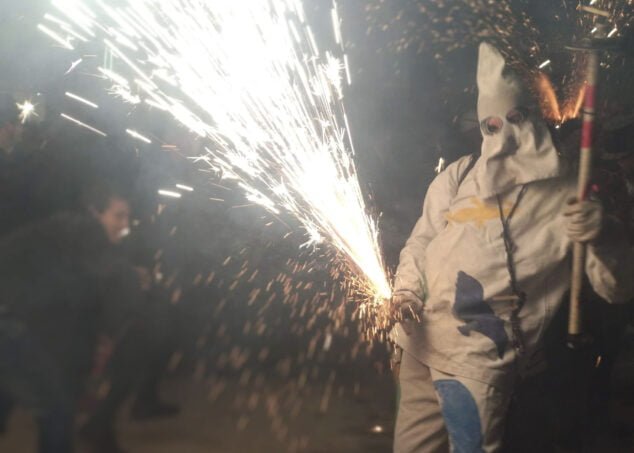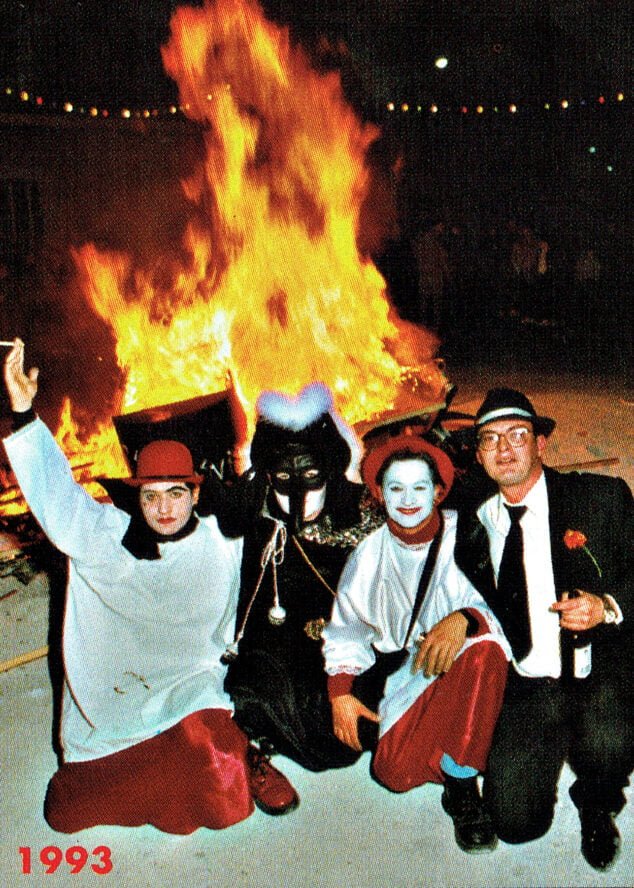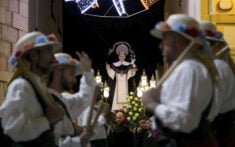La Pinyata or Burial of the Sardine in Pego represents the end of the carnival period in the town. There is talk of the Carnival trilogy in the town, since, for three consecutive weekends, Pego mobilizes its inhabitants and visitors in three different parties.
Next you have an index with all the points that we are going to deal with.
- 1.
- 2.
- 2.1.
- 2.2.
- 3.
- 4.
- 5.
- 5.1.
- 5.2.
- 5.3.1.
- 6.
When is celebrated?
The Burial of the Sardine takes place the Saturday after Carnival. This year, the date marked for its celebration is 17 February. It is one of the most loved festivals by the residents of Pego. Due to the coronavirus pandemic, it stopped being held for two consecutive years in 2021 and 2022.
Where is?
The tradition of the Pinyata de Pego calls for a concentration of comparsas to make a parade through the streets of the municipality. The mourning delegations go through the parade with the coffins and the music setting the night.
parade route
El Burial of the Sardine tour in 2023 it was the following:
- Plaça de l'Ajuntament
- Ecce Homo Street
- Capità Cendra Street
- Sant Jaume street
- Sant Agusti Street
- Pla de la Font
Correfoc route
In Pla de la Font, after the parade, the burning of the pinyachts in a big bonfire. Finally, the end of the festival comes from the hand of the correfoc. The route in 2023 was as follows:
- Pla de la Font
- Passeig Cervantes
- Street Ausiàs March
- Carmel Giner Street
- Llavador Street
- Sant Agusti Street
- Pla de la Font
Schedule
The different comparsas and groups start the day of Pinyata during the day. However, the parade schedule is fixed to the 00: 00 h as a way of concentrating the different groups of people who participate in the party. Once finished, a mobile disco is carried out and at 02:00 a.m. the correfoc and the Pinyata Ball traditional as high points and climaxes of the night.
What is?
the pinyata represents the death of Don Carnal who surrenders to the passage of Doña Cuaresma. These two characters represent, on the one hand, the figure that motivates and accompanies the debauchery of Carnival and, on the other, the period of relaxation and moderation that traditionally began with Lent.
During the Pego Pinyata, various comparsas of the town dress in mourning or with costumes and go accompanied by a pinata. This is a homemade monument that symbolizes Mr. Carnal. The most common is that the figure is represented in the form of a giant coffin or sardine.
The central act of the celebration is the parade that the comparsas perform throughout the town accompanied by music and each one with its pinata. On the other hand, the end of the parade is also very symbolic, since all the monuments are burned in the Pla de la Font, which expresses the end of the Carnival period.
History
The Pinyata festival, as it is known today, was born after Pego recovered the Carnestoltes main festival in 1983 after a long period of Franco's dictatorship. However, according to the Municipal Archive of Pego, the name of pinata It is collected from a celebration that the municipality carried out the years before the war.
Ball of pinyata before the Civil War
This is the pinyata ball, which took place in the town the first Sunday of Lent. This event was held in the casinos of the time that proliferated in Pego at the end of the XNUMXth century and the beginning of the XNUMXth. Dances were organized in the halls of the associationsbut without costumes.
during this party the game was held pinata, also known as cucanyes jockeys. between these games the one of breaking a clay pot stood out, which took place in Pego. Inside the casserole various prizes or gifts were introduced that were found when destroying the container.
The Burial of the Sardine from 1985
It was not until 1985 that Pego established the now traditional Burial of the Sardine, although with some changes and nuances compared to the pinyata ball. According to the Municipal Archive, the festival is born from the desire of the inhabitants of the municipality to continue a little more with the Carnestoltes festival. But, in this case, from a more intimate perspective, since the Burial of the Sardine in Pego brought together more locals than visitors.
The celebration was also a way of symbolize the death or burial of Don Carnal. Like the act of breaking the pot, the burning of monuments pinyachts means definitively putting an end to the weeks of carnival celebrations. And, somehow, purify the debauchery of the previous festivals with the fire that gives way and represents the arrival of good weather and warmth after winter.
Nit de Pinyata and current correfocs
Pinyata's first night arises from the initiative of four pubs from the locality who were encouraged to carry out the event. That midnight, the various troupes gathered they burned the first pinyatas accompanied by live music of the municipal gangs.
In 1992 the symbolism of fire was taken to another level. During the end of the festival, apart from the burning of monuments, also he joined the correfocs, a parade of fireworks in the middle of the street that invites participants to dance and jump among the sparks. For this reason, nowadays the Pinyata is also very well known for this specific moment of the night.




















































A great report, thanks for being happy to return to eixes festes so from Poble de Pego, molt ben expilcat🙋👏👏